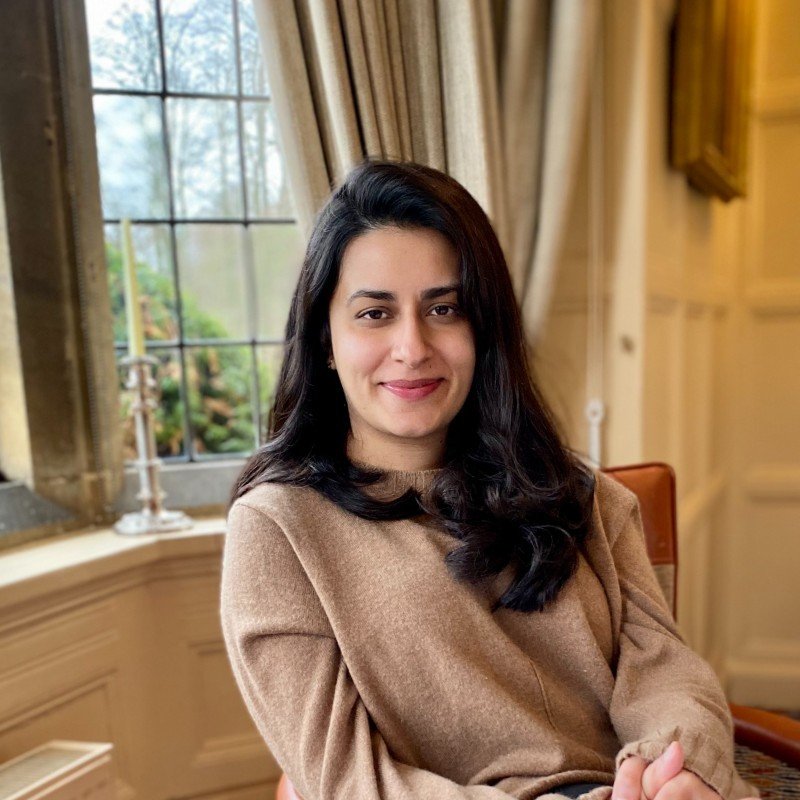Warren Buffett famously said he only invests in businesses with “moats” around them; meaning durable competitive advantages that protect a company from its rivals and help secure its own growth. While moats can take many forms, one of the most powerful and enduring in today’s times is intellectual property (IP).
This is especially important in light of the growing use of artificial intelligence globally. As we’re seeing the constant rise in AI related lawsuits for breach of IP rights, it’s becoming increasingly clear that modern, enforceable IP laws are necessary to create legal and commercial barriers that cannot be crossed.
The United Arab Emirates (UAE) is among those countries that recognised the importance of strong IP protection in current times. The result? An updated and internationally-aligned legal framework. Emirati courts have made it clear through recent decisions (such as the one involving Red Bull’s protection of its IP in the UAE) that there will be strict enforcement of the country’s IP laws from here on out.
In this part 1 of our series on the IP laws in the UAE, Ronin Legal examines the new legal framework and gives an overview of what the industrial property law covers under its ambit.
The previous legal framework for IP laws in the UAE consisted of:
The updated legal framework comprises three federal laws enacted in 2021, each repealing and replacing its predecessor:
Together, these laws cover the entire range of IP rights, offering clear procedures for registration, enforcement, and commercialization. Administered by the Ministry of Economy (MoE), they draw on international best practices and demonstrate the UAE’s commitment to treaties like the Paris Convention, Berne Convention, and the TRIPS Agreement.
A cornerstone of the UAE’s IP regime is the protection of industrial property, governed primarily by the Industrial Property Law. This law offers comprehensive protection for the following:
Patents are granted for inventions that are new, inventive, and industrially applicable, with protection lasting 20 years. For less complex inventions, specifically those lacking an inventive step, utility model certificates (UMCs) can be applied for which offer a 10 year protection term.
Certain categories of inventions are explicitly excluded from protection, such as research, plant or animal species, medical and surgical methods, scientific principles and discoveries, business methods and computer programs, and inventions contrary to public order and morality.
Patent and UMC applications undergo formal and substantive examination by the MoE, which may request supporting documents to be submitted within 90 days. Once granted, patents are published in the UAE’s Industrial Property Bulletin, marking the beginning of enforceable rights.
The UAE is also a signatory to several international treaties, including the Patent Cooperation Treaty, which streamlines patent protection procedures for international applications. In other words, the UAE also provides a route to international protection once registration is completed domestically.
Patent and UMC holders enjoy exclusive rights to exploit their inventions, and prevent any third parties from either using, manufacturing, or selling the patented invention in the UAE, unless under a license.
It’s important to note that any invention created during the term of the employment contract belongs to the employer, unless otherwise agreed. Additionally, if a patent is filed within two years of the employee’s departure, it is presumed to have been made during employment, granting rights to the employer.
Industrial designs, which protect the aesthetic aspects of products (including shape, pattern, and colours) can be registered under the law to give 20 years of protection. To qualify for protection, the designs must be novel (it is considered novel unless disclosed before the filing date) and not violate public order or morals.
Industrial designs rights holders can prevent third parties from using, importing, possessing, offering for sale, or selling any products related to the Industrial Design.
Additionally, the law provides for the protection of undisclosed information, such as trade secrets and confidential business information, that provide a competitive advantage to businesses. The conditions for protection of undisclosed information are; it must be confidential (not widely known in the relevant field), derives commercial value from secrecy, and the owner has taken effective measures to maintain its confidentiality.
These rights are not time-limited but require proactive safeguards by the rights holder to prevent unauthorized disclosure.
The UAE’s new intellectual property framework is more than just a legal system; it is a strategic asset designed to fuel innovation, attract international investment, and enhance the competitiveness of its economy. By aligning with international standards and incorporating modern enforcement tools, the UAE offers both domestic and foreign stakeholders a reliable jurisdiction for protecting intellectual assets.
In the next part of this series, we will explore the key features of the UAE’s Copyright Law and Trademark Law, including how they operate in practice and what they mean for creators, businesses, and investors.
Authors: Shantanu Mukherjee, Varun Alase, Mohak Vilecha

























My relationship with Ronin Legal and Shantanu has advanced exponentially in a very positive direction in a very short time. The Ronin team is zealous in their partnership with us to advance the mission of our small start-up to become a world leader in neuroscience development. Ronin has taken the lead with review of our legal and technical documents and contracts. They are subject matter experts in general counsel services across our global environment. It is a pleasure to work with a team that is pragmatic and responsive in all circumstances. They are second to none.

Executive Director, Clinical Development, Engrail Therapeutics
Shantanu and the team at Ronin have been invaluable partners for our investment firm’s expansion into co-development of specialty pharmaceutical drugs. As we made the transition from more traditional VC investing to direct drug development collaborations, the team at Ronin have utilized their deep domain expertise in cross border pharma to help us set up an effective and compliant structure for our project. I would highly recommend Ronin to any organization in the life sciences space that is looking for legal partners with in depth understanding of the various nuances of this dynamic sector.

Managing Director, Spektar Therapeutics
I’ve been very happy with Ronin’s ability to ramp resources up or down depending on what we require in a particular week or month. In addition, the ability to connect with multiple lawyers across jurisdictions quickly (US, UK, UAE, Singapore), help us to assess international law firms and then work with them to get the best legal advice is very appreciated.

Chief Business Officer, Ultrahuman
Shantanu and the Ronin team have been very pragmatic and responsive business partners, working with Konfer – an agentic genAI product for confident continuous compliance to Regulations. They analysed the state of AI regulation in various countries, and reviewed the EU AI Act and other relevant AI legislation offerings of our product. The team’s ability to align complex legal information to product offerings has been invaluable to us. Ronin Legal has negotiated our business contracts for partnerships. They’re solution-oriented and cost-effective, and I would highly recommend Ronin Legal to startups and tech companies everywhere, and especially those building AI powered businesses.

CEO, Founder, Konfer.AI.
I have worked with the Shantanu, and his team, for a number of years during which time his insight and acumen have helped us greatly in the negotiation of a number of pharmaceutical licensing agreements and in the formation of new subsidiaries. I thoroughly recommend Ronin Legal to anyone seeking advice and guidance in pharmaceutical deal making.

Chairman, Altus Group of Companies
Shantanu and team Ronin were meticulous, detailed, persevering and most importantly batting entirely for our side through our seed round fundraise and beyond. They were always approachable, available and balancing principle with pragmatism. I would highly recommend the team for any startup related legal matter.

Founder, 26 Décor
First of all, of behalf of SIIX Corporation, we wish to congratulate you & team on the launch of your new website!
We are very happy to be engaged with you & your professional team on our business venture in India and on establishing our JV initiatives. With your expertise, integrity, and commitment to providing trusted legal guidance, we truly believe to achieve our goals and successfully complete our JV partnership and, to expand our business in India with your support.

Managing Director, SiiX India Private Limited
Ronin Legal has become an integral part of our deal process. Their solution-oriented mindset, combined with consistently high-quality work and exceptional responsiveness, makes contract negotiations smoother and more efficient. They truly understand our business needs

Working with Shantanu and Ronin Legal has been truly transformative for my startup. From our very first meeting, Shantanu stood out with his approachable manner and deep commitment to understanding my business. He consistently showed genuine interest and empathy, always providing clear, practical advice that’s perfectly tailored to our needs.
What truly sets Shantanu and Ronin Legal apart is their unique blend of legal expertise and a true partnership mindset. They deeply understands the challenges of building a startup, cutting through jargon to give advice that’s actually useful and helping us avoid costly mistakes without any pressure. It feels less like a traditional client relationship and more like having a dedicated co-pilot invested in our journey. They have become an invaluable ally, that we trust and depend on.

Founder & CEO, OrgDesignWays Consulting
I cannot speak highly enough about the exceptional service provided by Ronin Legal. Their team made what could’ve been a complicated and stressful IP process feel smooth and manageable. From the outset, their team demonstrated a deep understanding of intellectual property law, offering not only expert legal guidance but also a strategic mindset advising on protection of our brand in various regions. They were responsive, thorough, and truly acted as partners in safeguarding our IP assets. Their attention to detail, clarity in communication, and professionalism gave us complete confidence throughout the process thus far. I wouldn’t trust anyone else with our intellectual property.

The Wrong Gym
Copyright © 2025 | Ronin Legal | Website Maintained by Law Strings Management | Privacy Policy | Cookie Policy | Terms of Use